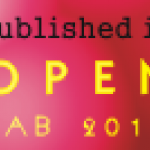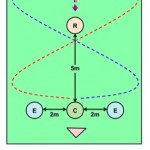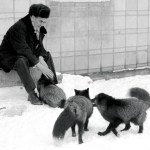buzz
Left Top: Pacific hatchetfish; Left Bottom: longfin lanternfish; Right: an acoustic instrument in the Pacific Ocean. (Images from Scripps Institution of Oceanography press release)
I love a good mystery. This one has puzzled scientists for several years now...ever since they discovered a humming or buzzing noise in the Pacific ocean, an otherwise rather quiet place. This was no ordinary noise, that they knew of. In a recent interview on NPR, Dr. Simone Baumann-Pickering, Scripps Institution of Oceanography (La Jolla, California) shared what she and her team think is causing all that noise…
Earlier this month, the Jet Propulsion Laboratory in Pasadena, California had its annual two-day open house. For a laboratory complex that has the same acreage as Disneyland, it was just as crowded as the House of Mouse on a busy summer day. What a refreshing sight it was to see so many people - couples, families, grandparents and grandchildren, groups of teenagers - coming to a scientific laboratory to learn about space and science!
And how awesome to see hundreds of people in line for... not a roller coaster and not a parade, but a chance to see the next Mars Rover, Curiosity!
And…
Painstaking scientific research has identified seven dating tips that could boost your chances on Valentine's Day ... including shouting in his right ear and scaring him witless.
Whether or not you have a Valentine this year, head on over to check out to my latest piece in The Guardian: Valentine's Day dating tips from lovestruck scientists.
Photo: Getty Images/Brand X
It's here! After more than a month of reviewing, I am pleased to announce the list of posts that will be included in this year's edition - the fifth - of The Open Laboratory!
In no particular order:
Givin' props to hybrids by DeLene Beeland
The decade the clones came: Beware the mighty Marmokrebs! by Zen Faulkes
Can seabirds overfish a resource? The case of cormorants in Estonia by Hannah Waters
The Data Speak by Andrew Thaler
Testing the flotation dynamics and swimming abilities of giraffes by way of computational analysis by Darren Naish
Shark week! by EcoPhysioMichelle
Size really does…
Ah, Thanksgiving. A day full of turkey, cranberries, pie, and, of course, SCIENCE! After you fill your stomach with gravy and stuffing, stuff your mind with all this great Thanksgiving science.
What's any good Thanksgiving feast without some turkey? Emily Anthes of Wonderland starts the meal off with an offering of thanks for the turkey's contribution to cancer research. But wait! That's not all the science of turkeyhood to be consumed. Feast your minds on my contribution at the Scientific American Guest Blog: the social-cognitive abilities of turkeys. And in case you're feeling particularly…
Despite the fact that my research lies at the intersection between cognitive, comparative, and developmental psychology, I am also quite interested in the evolution of our understanding of psychopathology. The ultimate goal of the study of psychopathology is to ground such disorders in brain and body. But our understanding of some pathologies are simply not there yet (though some of our therapeutic interventions still prove effective even if we don't quite understand the etiology of a given disease or disorder). The main conflict in the field that characterizes the study of psychopathology is…
Welcome to the mental illness mini-carnival! Mental illness, or psychopathology, is a field riddled with controversy and it can be sometimes confusing to wade through all the uncertainty and conflicting data and opinions. In an effort to help make sense of some of it, your faithful psychology and neuroscience bloggers are here to help.
"Illness is like the street you've driven down your whole life. So familiar you've never bothered to look around. We've all experienced illness, either first-hand or via someone we know, but rarely do we stop to wonder what it really is." Christian Jarrett of…
This week is Social Media Week in Los Angeles, as well as in Mexico City, Milan, Bogota, and Buenos Aires.
What does that mean, exactly?
Social Media Week is a multi-city global conference connecting people, content and conversations around emerging trends in social and mobile media. Dozens of free events hosted at locations all over the city will bring together CEO's, entrepreneurs, journalists, bloggers, brand managers, CMO's, social media strategists, artists, activists and the technology/media digerati. Across a wide range of topics, industries and causes and with nearly 70 events…
As I'm sure many of you did, I recorded Phil Plait's (twitter, blog) Bad Universe pilot last week, and it was so good that I watched it twice. And then two more times as I tried to figure out why it was so compelling. Why am so interested in picking apart these particular 44 minutes of TV awesomeness? Because at the end of the day, effective science teaching isn't so different from effective science programming, even down to the timing. In an hour of TV, you get about 44 minutes of programming. Likewise, in an hour-long lecture, you can probably only use about 75% of that time, about 44…
This post considering the evolutionary origins of numerical cognition, specifically in terms of the approximation of large numbers, is meant as a companion to this week's series on the developmental origins of numerical cognition and developmental dyscalculia, at Child's Play.
What are the origins of number representation in the mind? Are there any innate building blocks that contribute to our understanding of mathematics and number, or must everything be learned?
Number is an important domain of human knowledge. Many decisions in life are based on quantitative evidence, sometimes with life…
In most zoos and animal parks, polar bears (ursus maritimus) attract such a disproportionate amount of attention that they are referred to in the industry as "charismatic megafauna," or in other words, "really cool animals." Perhaps it is because it is especially rare for the average zoo-goer to happen upon a polar bear in the wild, or because they live in such an inhospitable environment. Perhaps it's just because polar bears are so damn cute.
Maybe we should just blame Coca-Cola.
Whatever the reason, psychologists Michael J. Renner and and Aislinn L. Kelly of West Chester University in…
In general, the ability to attribute attention to others seems important: it allows an animal to notice the presence of other individuals (whether conspecifics, prey, or predators) as well as important locations or events by following the body orientation or eyegaze of others. We've spent a lot of time here at The Thoughtful Animal thinking about how domestication has allowed dogs to occupy a unique niche in the social lives of humans. They readily understand human communication cues such as eye-gaze and finger-pointing, and capitalize on the infant-caregiver attachment system to have their…
Last week, Travis, Christie, Scicurious and I spent about 45 minutes in a skype conference call.
The first 15 minutes were spent making fun of Travis for his strange Canadian speech patterns, and sympathizing with poor Christie for not being able to talk to us while enjoying the beautiful Hawaiian air, because just as we were about to start, the gardeners started making noise outside. What a travesty. Of course this was all before Travis hit the record button on his recording software. Next time, maybe we'll record that stuff too.
So what's left are a handful of random musings on life as a…
She: "What are you writing about?"
Me: "Cognition in cold-blooded animals."
She: "Hot."
Most people who study cognition focus on mammals or birds. But I hope I've convinced you that other animals are important to investigate as well. One research group at the University of Vienna likes cold-blooded critters. Turtles and lizards and such. They argue:
Reptiles, birds and mammals have all evolved from a common amniotic ancestor, and as such they are likely to share both behavioural and morphological traits. However, this common ancestor lived around 280 million years ago and so it is equally…
Once upon a Thursday night, blog bff Scicurious asked a particular blogger named Jason if he had access to a paper titled, Contraceptive efficacy of polyester-induced azoospermia in normal men. "I certainly hope so," he said. And so he logged in to his university's library proxy website, and searched for the paper.
She said, "PLEASE PLEASE PLEASE tell me you have access to this article" and then "it's about ball sacks I MUST HAVE IT." As it happens, he did have institutional access. So Jason downloaded it. It was a rather large file, so it took a little while for him to upload it to his Gmail…
I've decided I want to cover some recent research on social cognition in domesticated dogs. But first, we need some background. So here's a repost from the old blog.
Today I want to tell you about one of my most favorite studies, ever, of animals. Are you ready? It's a FIFTY YEAR LONG longitudinal study of captive silver foxes in Russia. Gather around, pour yourself a cup of your favorite beverage, get comfortable, and enjoy storytime.
In 1948, Soviet scientist Dmitri Belyaev lost his job at the Department of Fur Animal Breeding at the Central Research Laboratory of Fur Breeding in Moscow…
A few weeks ago I emailed Vanessa Woods and asked her pretty please if I could review her book. After reading all of the bonobo and chimpanzee papers written by Vanessa and her husband Brian Hare (both now at Duke) over the years, as well as their research on domesticated dogs and silver foxes (some of which I wrote about on the old blog), I couldn't wait to check out the book. So I was super excited to find it waiting in my department mailbox this past Wednesday morning. By Friday night, I had read the book cover to cover.
So, here's the short review: read this book.
And, okay, watch this…
What information is contained in the call of a mammal? Some calls might reflect the internal emotional state of the animal, like fear or anxiety, or they can refer to an external object, agent, or event, like the presence of a predator. Rhesus monkeys, lemurs, baboons, and guinea pigs, for example, will produce calls when separated from their conspecifics or in the presence of a stranger. Howler monkeys produce specific alarm calls for avian predators, even when they have never encountered an avian predator for several generations. Vervet monkeys produce different calls in response to…
Happy Earth Day, everyone!
In honor of the day, here's a modified re-post of piece I wrote recently for LAist.
Figure 1: Photo by poloroid-girl via LAist Featured Photos on Flickr.
The great philosopher Kermit the Frog once said, "It's not that easy being green." Maybe he was on to something.
You can't walk three steps down an aisle in any store without running into eco-friendly or "green" products. You probably have many of these products. Is your refrigerator or dishwasher Energy-star compliant? Do you have a paperless Kindle? Maybe bamboo guest towels in the bathroom? A Prius?
Why do you…
The party isn't over yet! Here's another helping of Monday Pets. Enjoy!
Wild Dog crawled into the Cave and laid his head on the Woman's lap... And the Woman said, "His name is not Wild Dog any more, but the First Friend."
--Just So Stories, Rudyard Kipling.
Archaeological evidence indicates that dogs were already a part of human society around the end of the Ice Age. Small dog skeletons have been unearthed in human communities as far back as 6- to 12-thousand years ago in Europe, the Middle East, and China. The jawbone of a domestic dog was found in a late Paleolithic grave in Germany, and…













